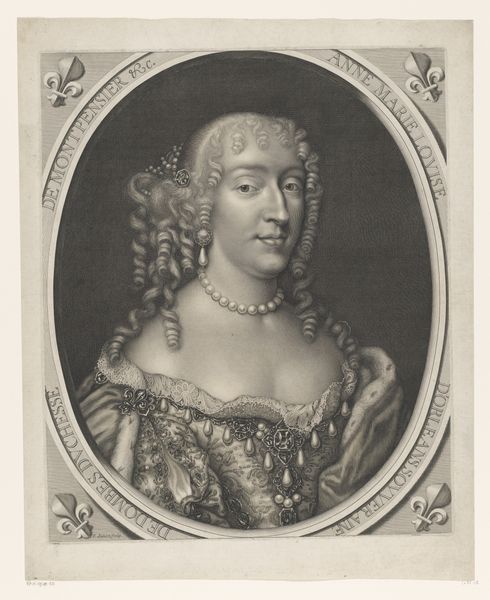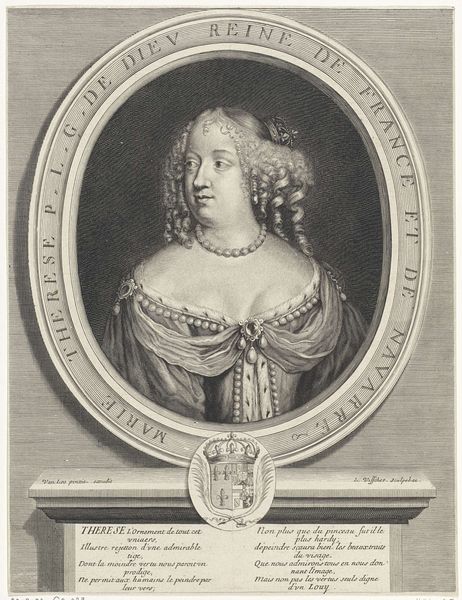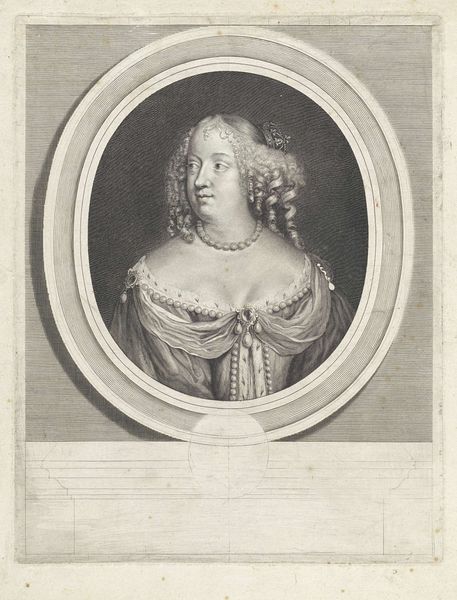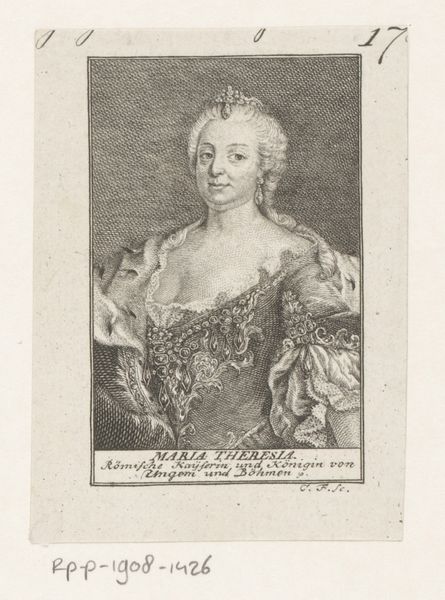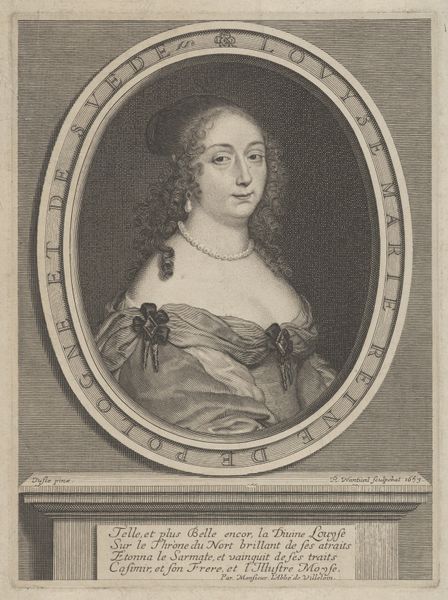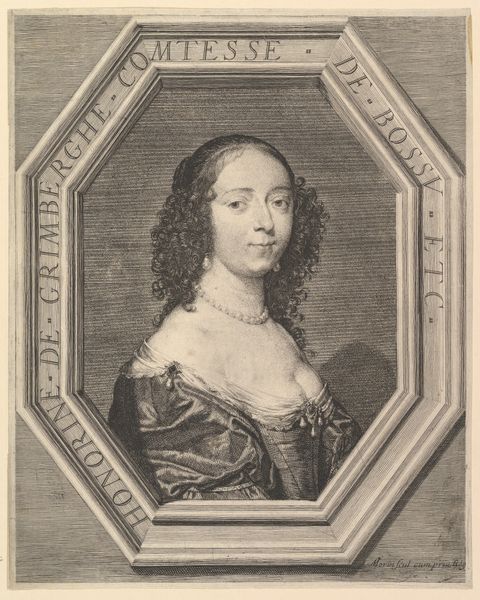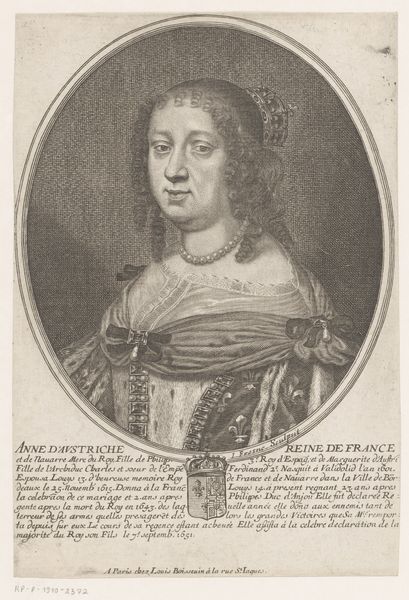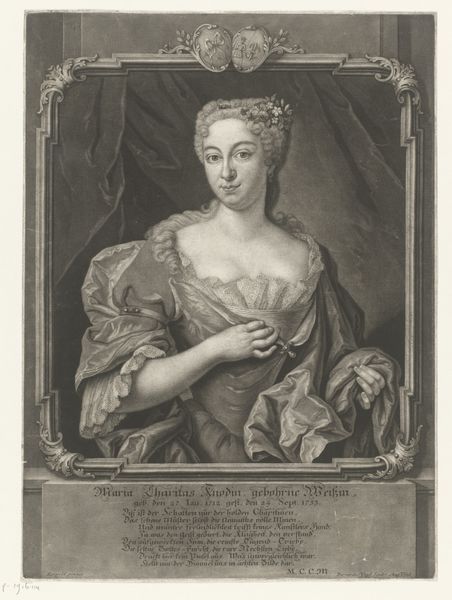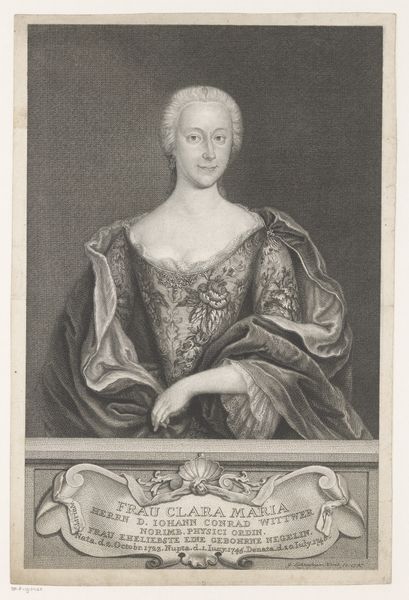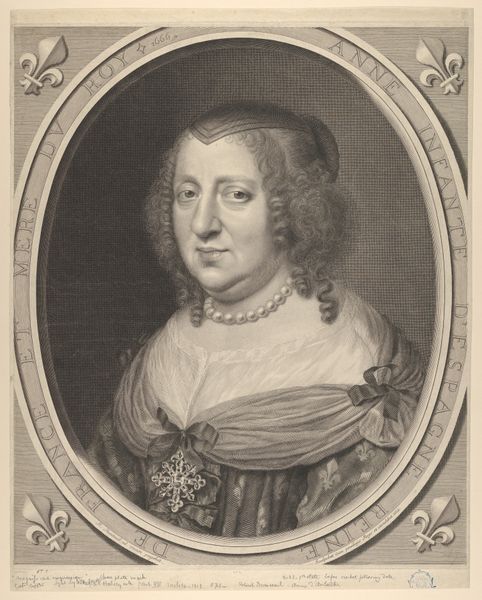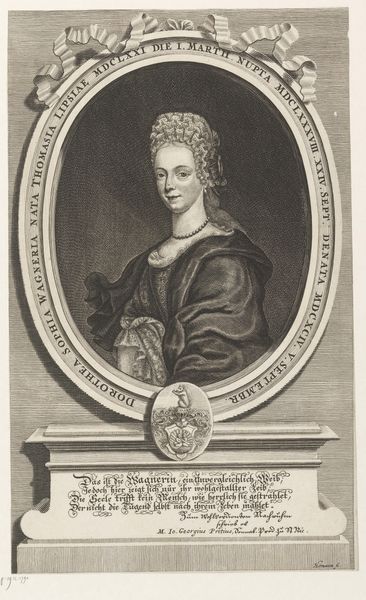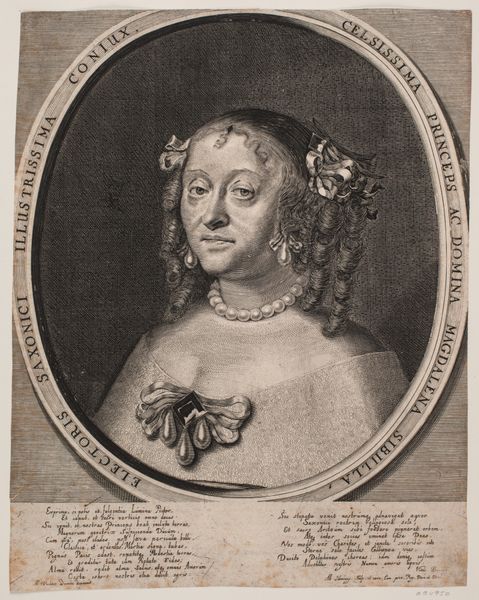
print, engraving
#
portrait
#
baroque
# print
#
engraving
Dimensions: height 286 mm, width 166 mm
Copyright: Rijks Museum: Open Domain
Curator: This is a Baroque engraving from 1749. Johann Martin Bernigeroth created this portrait of Anna Sophia von Rüxleben. Editor: It feels like a monument to dignity. The oval frame and elaborate base give it such formal presence, despite being a print. The contrast must have taken some planning to create so much value with tiny etched lines. Curator: Portraits like this served a clear social function. The elaborate framing, the cartouche displaying heraldic symbols, even the inscription, all construct an image of lineage and status. These were carefully orchestrated visuals. Editor: You can see the meticulous detail in the rendering of her lace and dress. There's such precise control, the way the light catches individual threads to suggest the luxurious textures. Even her expression feels controlled. Curator: Indeed. Anna Sophia's role as a member of the aristocracy demanded a public persona, a projection of authority and virtue. The Baroque style suited those needs. The level of adornment visible reflects something of court culture in this time, it tells a story. Editor: Yet it’s still just a single color. So much depth is communicated only through cross-hatching, varying line weight, and expert mark-making. Curator: And it's this reproducibility that truly impacted society, offering a dissemination tool for crafting aristocratic personas. Think of this print as propaganda, an act of image management that aimed to solidify power dynamics in the German lands of the 18th century. Editor: So the artifice is built right into the design. Intriguing to think of the technical choices in creating an easily reproducible object with high symbolic value and reach. Curator: Absolutely. Understanding how such images operated within specific social contexts is critical to understanding the period itself. Editor: Seeing those choices—the frame, the inscription, and the engraver's artistry, allows us to see through a window into a very precise world of power and intention.
Comments
No comments
Be the first to comment and join the conversation on the ultimate creative platform.
